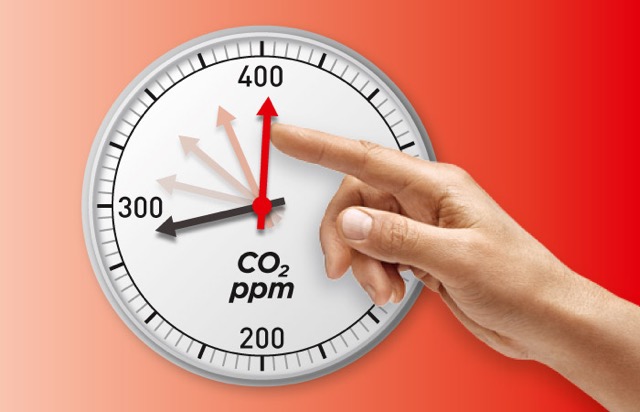Carbon : recalibrating the carbon dial

We all know that time is running out to respond to a world that is getting dangerously hotter. In fact, the number of extremely hot days every year when the temperature reaches 50°C has doubled since the 1980s* and we’re really feeling it, the world over, as are also glaciers** and many other of nature’s finely balanced cycles.
To ensure that we leave a habitable world for future generations, it is imperative that we accelerate the deployment of viable solutions, such as those embodied in the bioeconomy and bioenergy.
Central to Bio360 then, is the question of carbon.
« Observe due measure; moderation is best in all things » Greek poet Hesiod (c. 700 bc)
Continuing in the same vein, carbon in the right measure is good for us (18% of each of us is pure carbon and plants are almost half carbon).
Carbon found in the form of atmospheric CO2 has historically also been good for us too. Applying the same notion of anthropologically motivated “moderation”, atmospheric CO2 has done a good job for millennia of capturing and preventing the sun’s energy from escaping from the atmosphere, thereby enabling a climate conducive to the life forms we are familiar with today. Without it in fact, Earth’s oceans would be frozen solid.
Atmospheric CO2 unmoderated however, is bad for us and also for many of the other life forms that like us, occupy the biosphere … and equally the hydro-, atmo,- and geospheres.
So, how to recalibrate ? How to reset the carbon dial ? We can’t just push it back to pre-industrial revolution levels.
There are other approaches … it’s up to us to adopt them.
Making good use of the Carbon we need, avoiding the Carbon we don’t need and correcting the atmospheric Carbon overdose
Looking at this in temperature speak, being a more tangible expression of increases in atmospheric CO2 concentration, the IPCC has identified 1,5°C as the temperature increase threshold to not exceed, in order to avoid irreversible climate change with life-changing consequences.
And to remain within this limit, we need a multi-pronged approach.
Firstly, we need to significantly reduce our CO2 emissions to remain under the IPCC 1,5°C temperature. This means a strong focus on energy efficiency and a quantum shift to low-carbon renewable energy in order to radically bring down the rate of CO2 emission levels and moving onwards to net-zero emissions by 2050.
Secondly, we need to capture and recycle renewable carbon in the value chains of the bioeconomy to serve a wide range of human purposes using only carbon recovered or recycled from non-fossil sources, ie leaving the geosphere carbon exactly where it is, underground. Renewable carbon then spans carbon derived from biomass, from CO2 capture and utilization and from the recycling of currently existing and circulating carbon derived materials and products.
As such, renewable carbon is a fundament of the bioeconomy being, as it is, a central building block for biomaterials and products. Its distinguishing characteristic of being non geo-sphere sourced (ie non-fossil) means that the renewable carbon cycle is a unequivocal expression of the circular economy in action.
Thirdly, we need to drawdown atmospheric carbon to safe levels, which means we need to capture and sequester gigatonnes of “excedent” CO2 that lurks in the atmosphere.
Capture and Utilisation
Carbon capture and utilisation involves CO2 capture from fossil point sources (between now and phase-out), biogenic point sources and direct air capture (DAC) and are areas of fast evolving innovation.
Industrial processes, energy generating processes and DAC are the principal capture access points for CO2 which can then be diverted or extracted from the atmosphere and transformed into a range of useful everyday products such as for agriculture, chemicals, construction materials, synthetic fuels.
Carbon Capture and Sequestration
Carbon Dioxide Removal (CDR) involves the removal of atmospheric CO2 and it’s long-term sequestration. Negative Emission Technologies (NETs) provide the methods and pathways to achieve and can be assigned to the following general categories:
- Afforestation, reforestation, and forestry management
- Biosequestration
- Agricultural practices
- Wetland restoration
- Bioenergy with carbon capture & storage
- Biochar
- Enhanced weathering
- Direct air capture
- Ocean fertilization
There are some notable examples of Bioenergy with carbon capture & storage (BECCS) in practice although careful attention needs to be paid to the scale / sustainability balance.
Biochar is a fast gaining acceptance and interest as a local, technologically proven, cost-effective and broadly replicable route to sequestering large accumulated volumes of CO2.